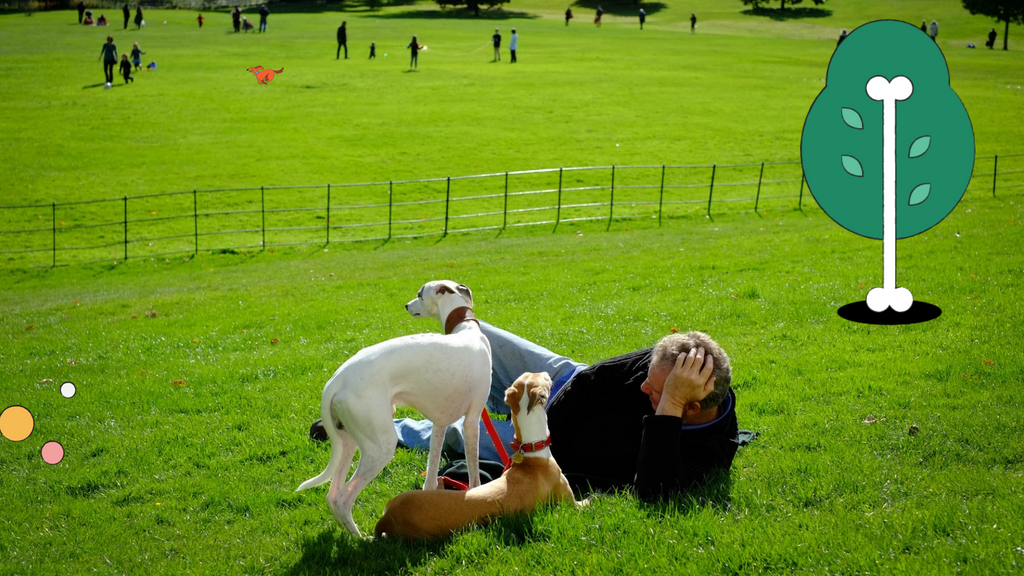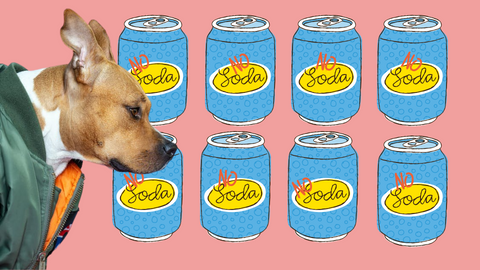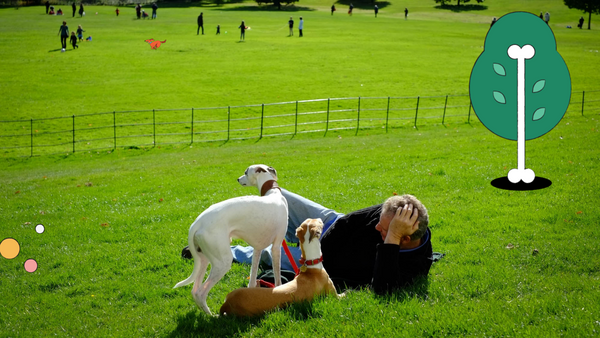Going to the dog park is a favorite activity for many dogs. Nothing beats the opportunity to run around with other dogs and expend some energy. However, there are risks associated with the dog park, especially when it comes to standing water.
 Some dog parks have ponds on purpose, while others border creeks or lakes. Standing water can often be found in puddles, low areas, and in water bowls and buckets. It's a good idea to bring your own healthy water for your dog and keep your dog from drinking or playing in water at the dog park because it can be contaminated with a number of things:
Some dog parks have ponds on purpose, while others border creeks or lakes. Standing water can often be found in puddles, low areas, and in water bowls and buckets. It's a good idea to bring your own healthy water for your dog and keep your dog from drinking or playing in water at the dog park because it can be contaminated with a number of things:
Blue-Green Algae (Cyanobacteria)
Cyanobacteria are extremely common in a wide range of aquatic environments, and they can be deadly. Blooms of cyanobacteria are dangerous to all kinds of animals and to humans, but dogs can be particularly at risk because of their love of swimming in bodies of water and their tendency to drink contaminated water.
Blooms are most likely when the weather is over 75 degrees and when it is sunny, just when your dog would like to go swimming. Water that is contaminated with cyanobacteria has a distinct appearance as if there were slime on the surface of the water or it can make the water the color of green paint. The film has a tendency to concentrate on the shoreline.
If your local dog park swimming hole typically has a green color or some algae build-up, you may not recognize blue-green algae when you see it. While signs may be posted warning you of the problem, this is not always the case so it is up to you to be vigilant. Be very careful about letting your dog drink from or swim in stagnant water, particularly when it has a green or slimy appearance.
Leptospirosis
Leptospirosis, known as lepto for short, is contracted from drinking standing water, like puddles and ponds. Water that is left in bowls at the dog park and not changed frequently can also be a culprit.
Lepto is a bacterial infection that can get into your dog's bloodstream. It can make dogs extremely sick and can even be fatal. All kinds of animals can carry lepto, including mice, rats, and raccoons. If these animals urinate in water or if water runs through vegetation contaminated with infected urine and ends up in a puddle that your dog drinks, your dog can also catch the disease.
At first, lepto causes lethargy and extreme thirst. As time goes on, your dog could develop kidney or liver failure. Lepto is a zoonotic disease, which means that it can jump from animals to people. If your dog contracts the bacteria, it is possible that you can get it as well.
The incidence of lepto increases through the spring and summer and peaks in the fall, but your dog can get it at any time of year. You should have your dog vaccinated against lepto in order to protect them, but it is also wise to never let your dog drink from standing water and always carry water for them.
Pythiosis
Pythiosis is an organism most similar to a mold that is typically found in water. It can infect either the skin or the gastrointestinal tract. Dogs can be infected in the gastrointestinal tract because they drink the water or in the skin from swimming in it.
When pythiosis affects the gastro system, dogs lose weight and may have vomiting and diarrhea. Infection may go on for a long time before signs become clear, making it difficult to connect the symptoms to exposure to water. When skin is affected, draining ulcers develop and won't heal.
Any standing body of water can be a source of infection with pythiosis. Treatment of this disease is very difficult, particularly when it develops in the gastrointestinal tract. It is known as “swamp cancer” because often the only way to treat it is to surgically remove the area.
Needless to say, this isn't always a feasible option when the GI tract is affected. Although there are emerging treatment protocols, this is considered a very serious and often-fatal disease that is best prevented rather than treated. The best way to prevent it is to keep your dog from drinking or playing in any standing water.
Giardiasis
Giardiasis is a microscopic parasite that can affect many animals, including dogs and people. This parasite is very tough, able to survive in the environment for some time. It is passed through the stool, so if a dog defecates in an area and then the stool is washed into a source of water, dogs that drink the water can become infected. This makes it a particularly risky parasite at dog parks.
Since there isn't a readily available vaccine for it, it can easily pass through multiple dogs in a dog park. Most dogs will have intermittent diarrhea and perhaps some lethargy or a fever, while some dogs may not have any symptoms at all. Other dogs, particularly dogs that are immunocompromised, can suffer very severe illness as a result of infection. Older dogs and puppies are particularly vulnerable.
Some dogs can rid themselves of the parasite without treatment, while other dogs need to be treated for a 3 to 10-day course of fenbendazole and/or metronidazole.
Bring Water to the Park for Your Dog
Any water that your dog encounters at the dog park may be contaminated with something that will make your dog seriously ill. Therefore, it’s smart to always bring your own water for your pup.
Make sure that you bring plenty of water and encourage your dog to drink from it regularly so that they won't be tempted to drink other water that they find. It's a good idea to choose hydrogen enhanced water that can help your dog recover from exercise more easily and to pick water that is flavored so your dog will be more likely to want to drink it instead of any other water they find.
_________________________________
About Rallie Blog Contributor: Coral Dawn Drake






Write Your Comment: